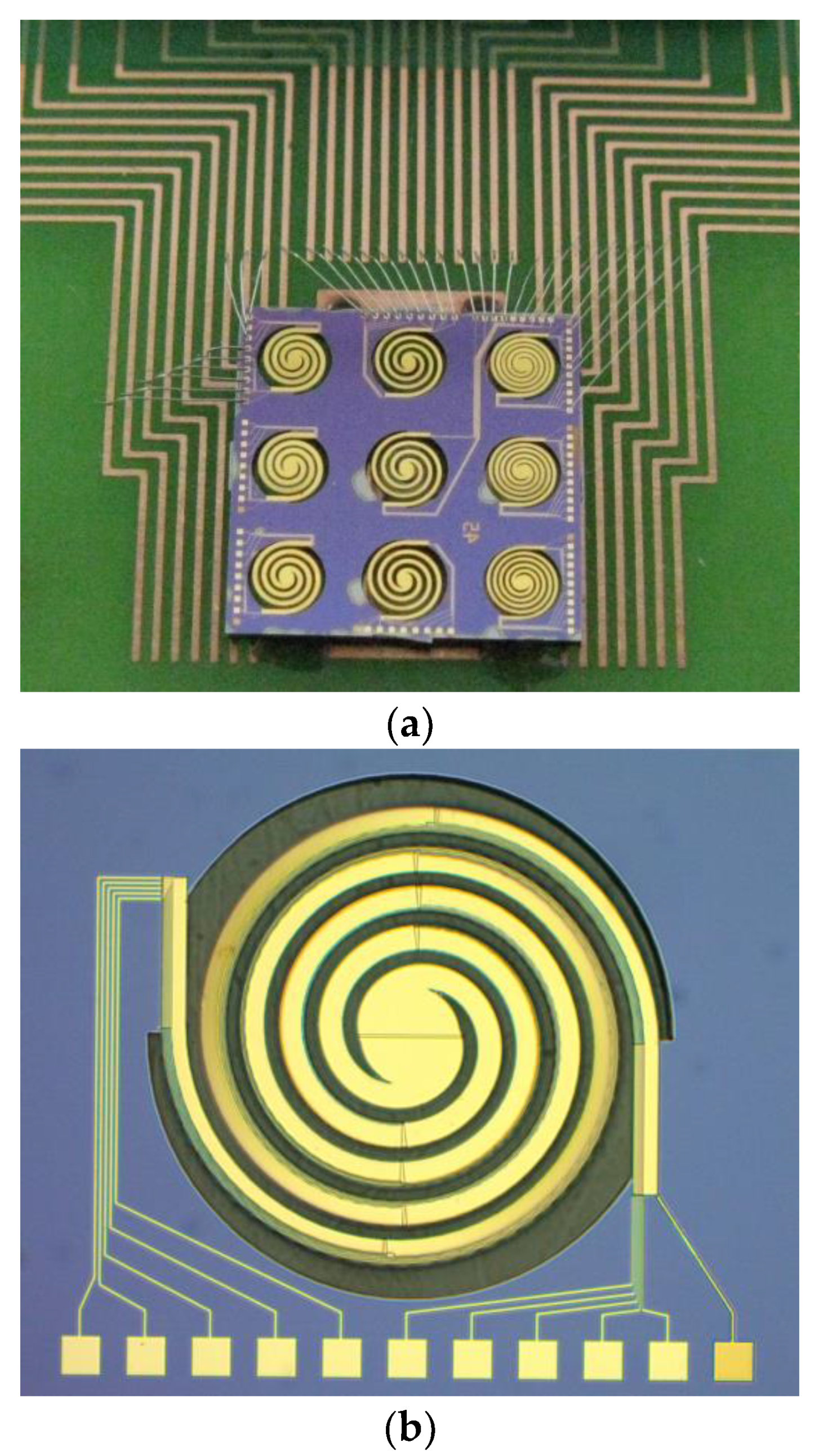Low-Frequency Piezoelectric Accelerometer Array for Fully Implantable Cochlear Implants †
Abstract
:1. Introduction
2. Materials and Methods
3. Results and Conclusions
Author Contributions
Acknowledgments
Conflicts of Interest
References
- Wilson, B.S.; Dorman, M.F. Cochlear implants: current designs and future possibilities. J. Rehabil. Res. Dev. 2008, 45, 695–730. [Google Scholar] [CrossRef] [PubMed]
- Cohen, N. The Totally Implantable Cochlear Implant. Ear Hear. 2007, 28. [Google Scholar] [CrossRef]
- Udvardi, P.; Radó, J.; Straszner, A.; Ferencz, J.; Hajnal, Z.; Soleimani, S.; Schneider, M.; Schmidt, U.; Révész, P.; Volk, J. Spiral-shaped piezoelectric MEMS Cantilever array for fully implantable hearing system. Micromachines 2017. [Google Scholar] [CrossRef] [PubMed]


| Chanel No. | 1 | 2 | 3 | 4 | 5 | 6 | 7 | 8 | 9 | 10 | 11 | 12 |
|---|---|---|---|---|---|---|---|---|---|---|---|---|
| Resonant frequency exp. (Hz) | 281 | 45 | 365 | 374 | 389 | 408 | 417 | 425 | 497 | 526 | 663 | 672 |
| Resonant frequency calc. (Hz) | 283 | 337 | 366 | 348 | 377 | 379 | 424 | 473 | 471 | 543 | 679 | 687 |
| Peak voltage (mV) | 6.89 | 8.80 | 9.60 | 9.53 | 5.71 | 4.47 | 2.64 | 5.02 | 3.40 | 3.05 | 4.40 | 3.14 |
Publisher’s Note: MDPI stays neutral with regard to jurisdictional claims in published maps and institutional affiliations. |
© 2018 by the authors. Licensee MDPI, Basel, Switzerland. This article is an open access article distributed under the terms and conditions of the Creative Commons Attribution (CC BY) license (https://creativecommons.org/licenses/by/4.0/).
Share and Cite
Radó, J.; Udvardi, P.; Soleimani, S.; Peter, L.K.; Bársony, I.; Révész, P.; Volk, J. Low-Frequency Piezoelectric Accelerometer Array for Fully Implantable Cochlear Implants. Proceedings 2018, 2, 1059. https://doi.org/10.3390/proceedings2131059
Radó J, Udvardi P, Soleimani S, Peter LK, Bársony I, Révész P, Volk J. Low-Frequency Piezoelectric Accelerometer Array for Fully Implantable Cochlear Implants. Proceedings. 2018; 2(13):1059. https://doi.org/10.3390/proceedings2131059
Chicago/Turabian StyleRadó, János, Péter Udvardi, Saeedeh Soleimani, Lucky Kenda Peter, István Bársony, Péter Révész, and János Volk. 2018. "Low-Frequency Piezoelectric Accelerometer Array for Fully Implantable Cochlear Implants" Proceedings 2, no. 13: 1059. https://doi.org/10.3390/proceedings2131059
APA StyleRadó, J., Udvardi, P., Soleimani, S., Peter, L. K., Bársony, I., Révész, P., & Volk, J. (2018). Low-Frequency Piezoelectric Accelerometer Array for Fully Implantable Cochlear Implants. Proceedings, 2(13), 1059. https://doi.org/10.3390/proceedings2131059





